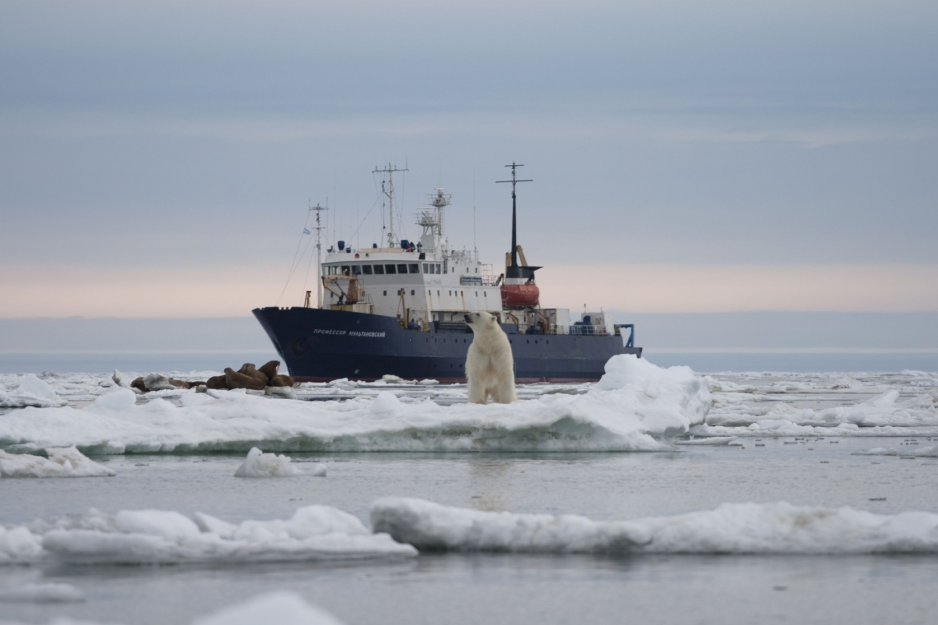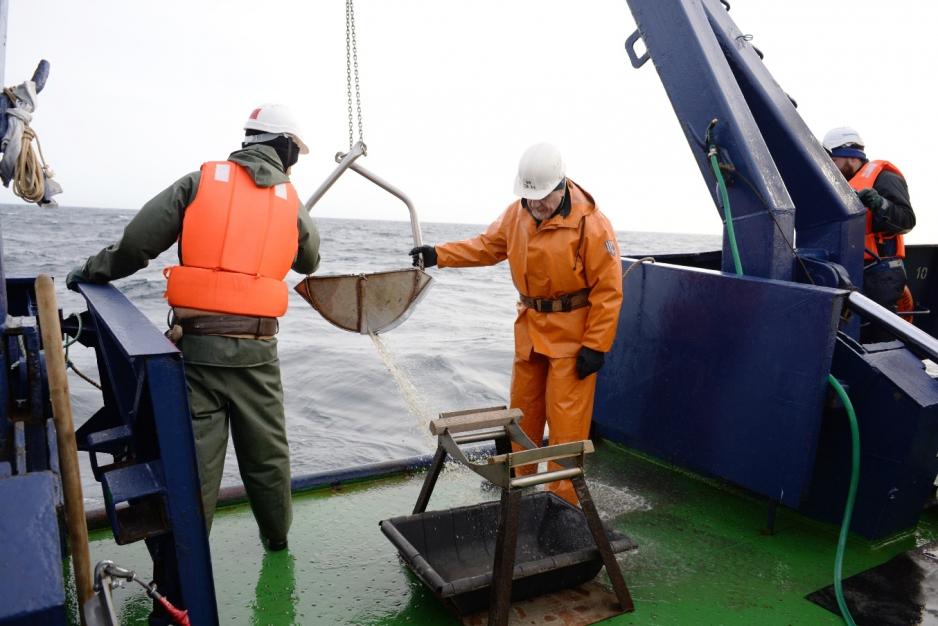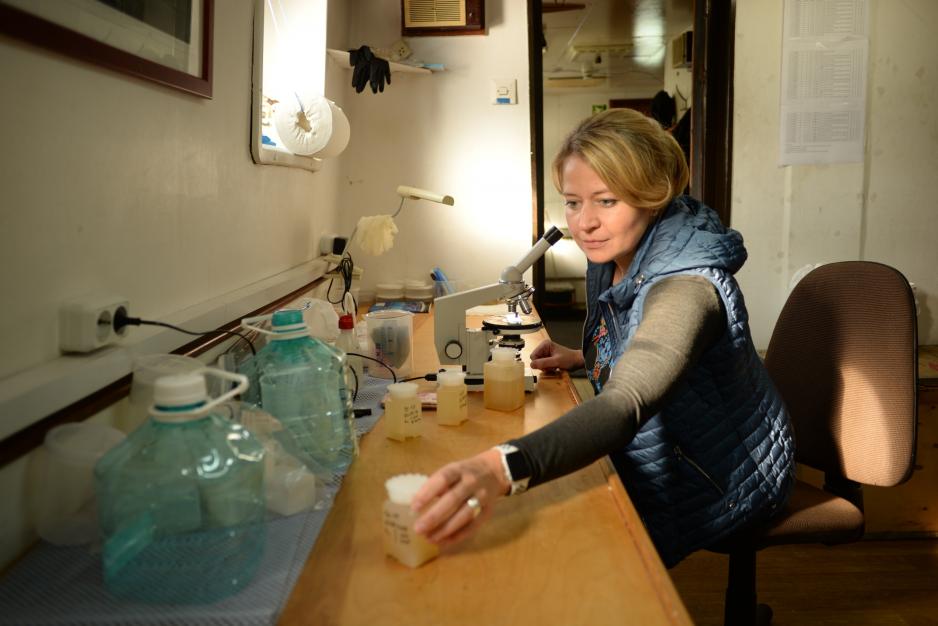Scientists Found Microplastics Along the Entire Northern Sea Route

The Professor Multanovskiy spent the late summer sailing along the entire Northern Sea Route looking for microplastics. The findings are depressing. (Photo: Rosgidromet)
Plastic waste and microplastics have been found in the sea along the entire Northern Sea Route, Russian scientists confirm. The results of a recent expedition may provide crucial information about how some of the world’s most remote ocean areas are affected by the global issue of microplastics.
The Russian newspaper Izvestiya this week reports about the findings done during the Transarktika 2019 expedition. The Professor Multanovskiy vessel on 25 August set sails from Vladivostok on the Pacific Ocean through the Northern Sea Route and to Murmansk, where the vessel berthed on 8 September. During the entire voyage, scientists found littering on the ocean surface, such as bottles, packaging and other plastic waste. However, what worries the scientists are the findings of microplastics.
Both in the Kara Sea as well as in the Barents Sea, large deposits of microplastics were found, plastic waste that is between one and five millimeters in size.
- We took a high number of samples and investigated them in the ship’s laboratory. Particles were found in various sizes in all oceans, primarily in the Barents Sea and the Kara Sea. However, we are not yet able to provide specific numbers, says Alexandr Yershov, Assistant Professor at the Institute of Ecology and Biological Resources at the Russian State Medical University, says to Izvestiya.

Scientists at work during the Transarktika 2019 expedition. (Photo: Rosgidromet)
The results from the expedition are expected to be ready in about two months’ time. This is the first time ever that samples have been taken of microplastics waste along the entire Northern Sea Route.
The final research results may thus provide vital information about how some of the world’s most inaccessible ocean areas are affected by the global issue of microplastics at sea.
More available following ice melting
Microplastics
Plastic waste smaller than five millimeters and often only the size of a grain of sand is defined as microplastics.
Microplastics may consist of both small plastic grains added to cosmetics, clothes or other products as well as being a result of larger pieces of plastic being ripped to pieces in nature.
Microplastics broken down is even more minute and referred to as nanoplastics.
Microplastics represent a danger to both animals and humans. Microplastics may end up in people’s food through fish or animals who consume this in polluted environments.
The Northern Sea Route, also referred to as the Northeast Passage, is the name of the sea route between Europe and Asia that runs north of Russia, and it is some 5,500 kilometers long.
Using the NSR may potentially reduce travel time from Europe to Asia by two weeks, however, the window of sailing each year is limited to two to four months. On parts of the route, vessels will depend on icebreakers.
The Danish container shipping company Maersk has announced that it plans on using the Northern Sea Route for shipping between Europe and Asia.
The entire route is located in the Arctic and within the Russian economic zone, which stretches out to 200 nautical miles from the state’s coast. Climate changes and ice melting has made the NSR more accessible than before. In 2017, a vessel traveled the NSR without assistance from an icebreaker for the first time ever. According to Izvestiya, 20 million tons of goods were transported through the NSR in 2018, which sets a new record.
Yershov says that the surface pollution the expedition found comes from bottles and waste thrown overboard from ships traveling the Northern Sea Route.
The largest amounts of waste were found in the Okhotsk Sea in eastern Russia, the Tchuktoskiy Sea near the Bering Strait, and also in the Barents Sea.

This article was originally published in Norwegian and has been translated by HNN's Elisabeth Bergquist.

